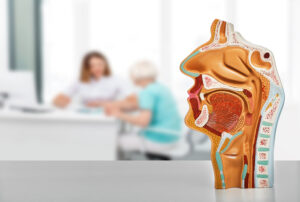How Much Do You Understand About Your Oral Anatomy? Get a Quick 101 Lesson
The mouth is a complicated structure with many functioning parts that helps you talk and eat. While most people don’t give it much consideration, it is a complex structure with many working parts that helps you speak and eat.
More than only teeth and gums make up the mouth. The gums connect the teeth to the jaw, whereas the teeth are the most visible components of your mouth. The tongue is a complicated muscular structure that aids in the chewing, swallowing, tasting, and verbalization of food. Saliva is produced by salivary glands on the floor of your mouth to aid in the chewing and digestion of meals.
Maintaining proper oral hygiene is vital for a beautiful smile because it keeps every area of your mouth healthy. Each element of the anatomy within your mouth will be discussed here. If you have questions about how to best care for your oral health, or you require an oral exam, contact California Dental Group at (800) 407-0161.
Teeth
The most obvious elements of your mouth are your teeth. Different layers make up each tooth. The crown is the visible outer covering of the tooth. Enamel, a strong material that protects the inner tooth structures, coats the crown. Dentin is the inner covering of the tooth that protects the pulp, which is a delicate tissue. The pulp, which includes nerves, blood vessels, and connective tissues, is the soft interior of the tooth.
Gums
Gums that are healthy should be firm and pink in color. The gum acts as a barrier against infection and provides a seal around your teeth to protect the underlying bones. Oral hygiene keeps the gums clean and healthy, preventing germs from forming between the teeth and gums. Bad dental hygiene can lead to bacterial accumulation between the gums and teeth, which can cause gum inflammation and gingivitis. Gingivitis, if left untreated, can evolve to periodontitis, a serious disease of the gums.
Your oral cavity’s floor
The lingual frenum, sublingual caruncles, and sublingual folds are the four sections of the floor of your mouth. The lingual frenum separates the two sides of the mouth’s floor. On each side, there are two sublingual caruncles. They have a salivary duct, which produces saliva. More salivary glands are found in the sublingual folds, which run to the base of your tongue.
The tongue
The tongue is linked to the frenum, a bit of tissue on the floor of your mouth. You can use your tongue to communicate, consume, and taste food. Papillae are little bumps that cover the surface of your tongue. You can taste meals thanks to your papillae. Salty, sweet, bitter, and sour tastes may be distinguished by taste buds. Brushing your tongue as well as your teeth is essential for fresh breath.
Contact California Dental Group at (800) 407-0161 to arrange an appointment with your dentist if you have any questions about your teeth or any other aspect of your oral anatomy.





